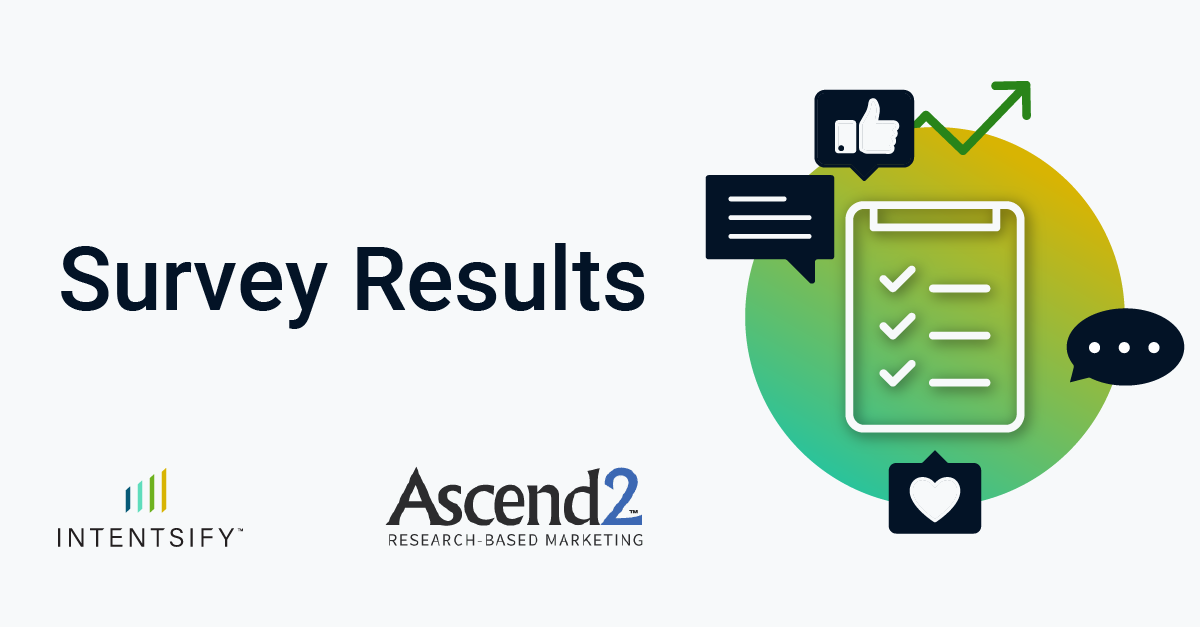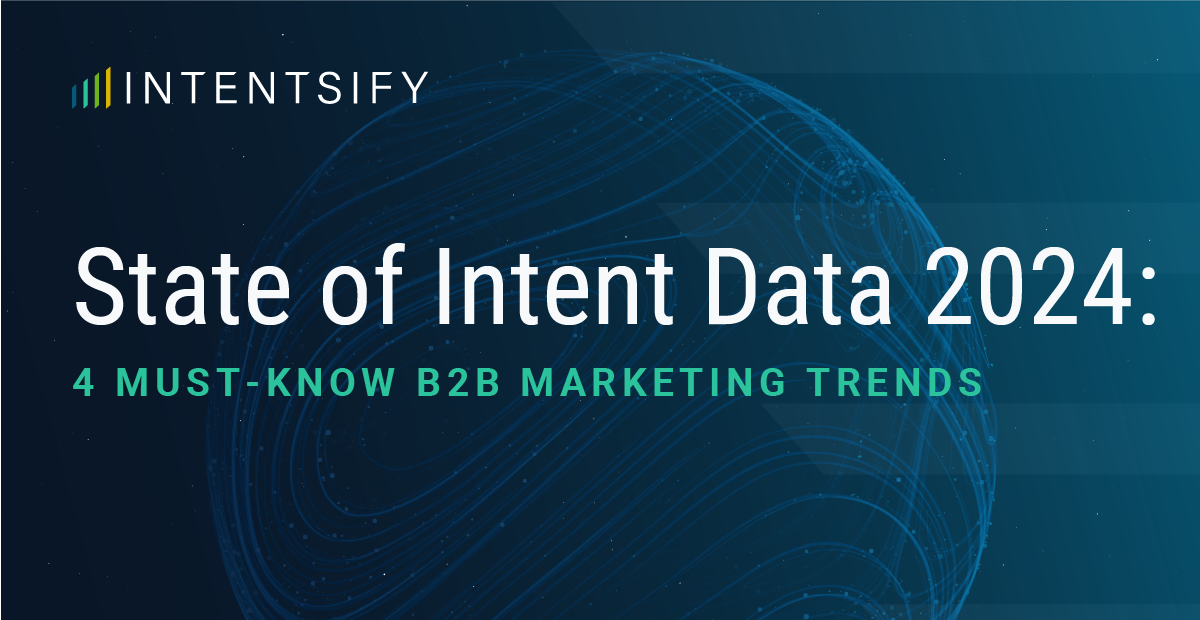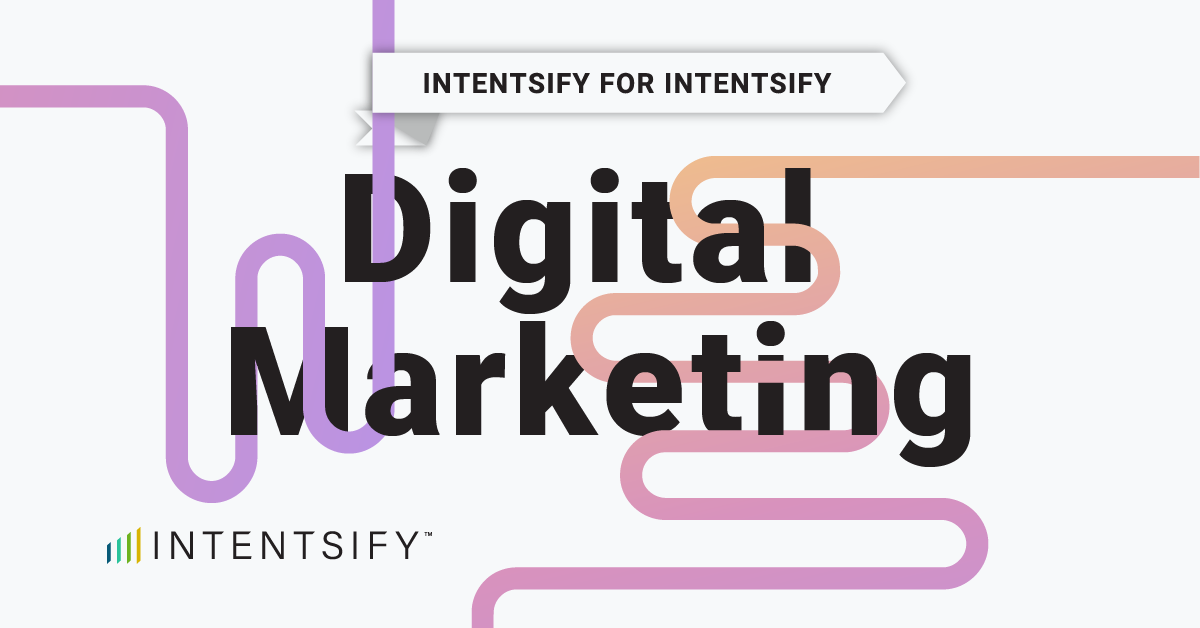Intentsify and Ascend2 recently fielded a survey of 352 B2B marketers in North America and EMEA to better understand their intent data use cases, as well as associated challenges and benefits.
The responses are enlightening. Similarities exist across all marketing job functions surveyed, which include and were categorized by:
- Demand generation, growth marketing, or acquisition marketing
- Digital marketing or performance marketing
- Media planning or paid media
- Brand marketing or marketing communications
- CMO or head of marketing
For example, there’s strong agreement on the level of intent data use at their organizations. The vast majority of respondents across all five B2B marketing sub-functions report either regular or heavy use of intent data. In fact, the group with the least strong use of intent data had 81% of respondents reporting regular or heavy use.
However, there are areas of disagreement. Asked what would be the most valuable additions to current intent data solution(s), the top responses varied between “Ability to customize intent models based on our unique needs,” “The ability to easily share intent insights across the org,” and “Better dashboards, reporting, and integrations into other systems.”
Let’s jump into specifics…
Intent Is No Longer Just for Digital Marketing & Demand Generation
Intent data started out as a tool for identifying which accounts to target, primarily for digital advertising and content syndication (lead generation) campaigns. Its popularity quickly grew alongside the quick rise of account-based marketing (ABM) strategies. By surfacing which companies are in-market to buy specific solutions, intent data offered a powerful tool for digital marketing and demand gen teams adopting ABM strategies.
But intent data is now used for much more than just digital advertising and lead generation. While “Digital advertising” remains the most popular intent-supported tactic (used by 67% of respondents), it’s now closely followed by numerous other use cases. In fact, since last year’s survey, “Market & competitive intelligence” has supplanted “Lead generation” for 2nd place (62% and 57%, respectively).
Other popular use cases include:
- “Customer account expansion” (i.e., cross-sell/upsell) (51%)
- “Account and/or lead scoring” (44%)
- “Message selection and/or optimization” (40%)
- “Customer churn prevention” (32%)
- “Event planning” (31%)
The key takeaway: intent is no longer just a targeting tool. It’s become a critical component of go-to-market (GTM) strategies, providing intelligence to drive everything from competitive brand and product positioning to account-specific messaging to the selection of engagement tactics.
That explains why the survey shows large-scale intent adoption among groups other than demand gen and digital marketing. “Brand Marketing/Marketing Communications” represents the group with the least strong use of intent data; yet 81% of respondents in this group still report regular or heavy use. More importantly, 92% of the CMO/Head of Marketing group claim regular or heavy use—proving the proliferation of intent’s impact.
New Use Cases Create New Intent Data Challenges & Needs
As marketers increase their intent data skills and expand their use of it, new challenges emerge. The first intent data survey Intentsify fielded three years ago showed activating intent as the No. 1 challenge. According to this year’s survey, “Data activation” is the least concerning intent data challenge.
Instead, “Data Quality” and “Data Analysis” vie for the top challenge. Challenges with data quality edge out analysis issues if we take responses in aggregate (70% versus 64%, respectively). These findings are largely the same across all marketing role groups.
The newfound focus on data-quality and -analysis challenges helps explain the top two improvements/additions to their intent solutions marketers seek.
Selected by 58% of respondents, “Better dashboards, reporting, and integrations into other systems” speaks to challenges with data analysis. On the other hand, “Ability to customize intent models based on our unique needs” (57%) aligns with marketers’ desire to improve data quality.
However, it is important to note that top responses varied by each job role — and these variations make sense. As the use of intent data becomes more specialized and tuned to differing use cases, users’ functionality requirements are evolving too.
Emerging Patterns in B2B Marketers’ Use of Intent Data
Several overarching patterns emerge in the survey results.
First, the use and value of intent data continues to expand across B2B marketing departments. A tool used primarily by digital marketers and demand gen practitioners just a few years ago, intent data now supports every B2B marketing role—and numerous roles in sales and customer success.
Secondly, as intent solutions evolve and users become more skillful in using them, we’re not only finding expanded intent data use cases; we’re also seeing different challenges grow in importance among users, affecting their need for better and/or new functionality.
Lastly, the survey highlights B2B marketing executives’ strong appreciation for intent data’s impact. Of the 52 CMOs surveyed, 90% agreed that intent data delivers good or excellent “ROI/Impact.” This explains why 46% of CMOs expect their intent investments to “significantly increase” in the following 12 months, and another 44% expect to increase investments moderately.






